How The Aladdin Live Action, Animated And Broadway Versions Compare To Each Other
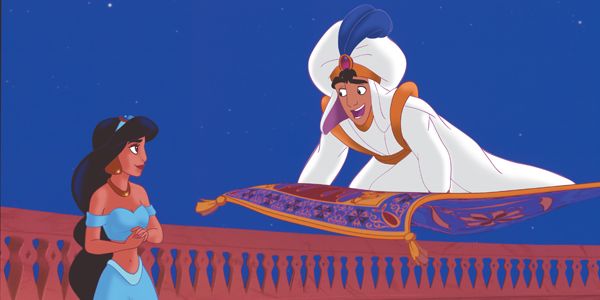
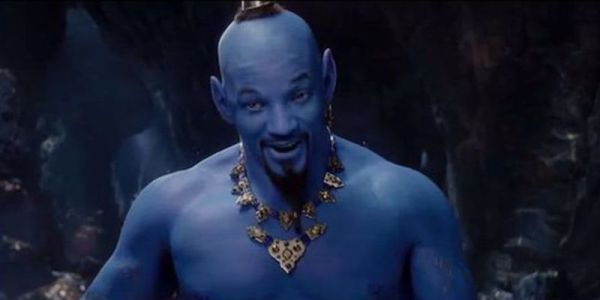
The following contains some minor SPOILERS for the new remake of Aladdin**.**
Aladdin was a smash hit when it was released by Disney in 1992. It contained one of the greatest animated voice performances ever by Robin Williams, it had an incredible collection of memorable songs and it had a story that combined great action, comedy and romance. It's no wonder that Aladdin is now getting the live-action remake treatment from Disney in the same way that other successful Disney films have.
Of course, the new theatrical remake isn't actually the first time the story of Aladdin has been re-told. After Robin Williams, but before Will Smith, Aladdin was adopted for the Broadway stage. How do these three different versions of Aladdin compare to each other, and which is the best version of Aladdin? Let's break them all down and find out.

The Similarities
The Story: First and foremost, the main thing that ties the three versions of Aladdin together is the story. If you've seen one version of Aladdin, then you basically know where the story is going when you sit down to watch another version. Aladdin is a homeless thief. He meets a disguised Jasmine in the marketplace and falls for her. He is tricked by Jafar to go after the magic lamp. Aladdin frees the Genie and becomes a prince... etc... etc...
The characters: The majority of the characters are basically the same. Aladdin is still the dreamer who wishes for more in his life. Jasmine still wants to be free to make her own decisions. The Sultan is mostly clueless, and Jafar is just cartoonishly evil, even in the versions that aren't actually cartoons.
The music: You'll also find that most of the music is the same, while both the stage and live action film version have additional music that has been added, they also contain all of the songs from the original animated film soundtrack, if not every version of those songs.
What makes these iterations of Aladdin stand out, however, is what they do differently.
Your Daily Blend of Entertainment News
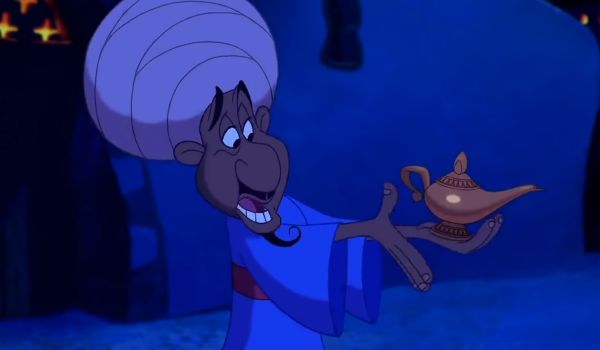
The Differences
The story: While the general structure of the plot is essentially identical across the three versions, there are a few nuanced differences. The animated film and the new live-action one create a framing device which sets up the idea of a character telling us the story of Aladdin. The Broadway show just gives us a basic introduction by the Genie which is implied to be non-diegetic.
While both the animated film and the Broadway show have two major marketplace scenes, the "One Jump Ahead" song and the meeting with Jasmine, the new live action movie combines these into one. Also, in the new movie, instead of being imprisoned after being discovered with the princess, Aladdin breaks into the palace to see Jasmine again and gets nabbed then.
In the animated film, Jafar convinces Aladdin to help him while in disguise, which means he doesn't know Jafar is dangerous when he meets the real vizier later on. In both the Broadway play and the new film, Aladdin knows he's working for Jafar the whole time, which puts him (somewhat) on guard later.
The live-action film also contains a significant new scene where Aladdin, in his Prince Ali disguise, tries to woo Jasmine at a party, which helps build the relationship of the two.
While both animated and live-action films have Aladdin using his second wish to avoid drowning. On Broadway, Aladdin is simply thrown in prison but he uses his wish to get free.
The finale of the three stories is also significantly different. On Broadway, Jafar never wishes to make himself a powerful sorcerer (probably because it would have made the show really expensive). Instead, he wishes to make Jasmine his prisoner and to become Sultan.
In the animated film, Aladdin ends up doing battle with Jafar, who has magically transformed himself into a giant snake. In the live-action film, our big action finale is a chase scene as Aladdin and Jasmine try to keep the lamp out of Jafar's hands while they're being chased by a magically-enlarged Iago.
The characters: The biggest character changes take place between the animated Aladdin and the Broadway version. While many Disney musicals have used intricate puppets to recreate the parts of animated movies that are difficult to realize on stage, Aladdin avoids this problem by eliminating and changing those characters.
Aladdin's pet monkey Abu doesn't make the jump to the stage. Instead, Aladdin has three friends, named Babkak, Omar and Kassim, that he pals around with who are in similar financial and living situations as he is.
Rajah the tiger also doesn't appear on stage. In his place, Jasmine has three handmaiden characters that she give her somebody to play off of.
Jafar's pet Iago does slightly better. The character exists, but rather than being a parrot, Iago is a man. He's just a basic henchman.
The new live-action film uses the realistic CGI that Disney has had such success with to bring Abu and Rajah back. Iago is also a parrot again, though while he does speak, he sounds more like the way a parrot would naturally speak, rather than speaking fully coherent English as he does in the animated film.
Jasmine does, however, still have a single handmaiden character in the new film. The character of Dahlia is much more involved in the story than any of the similar characters from Broadway.
Jasmine herself sees the most interesting evolution across the three versions. She's mostly a bystander character in the animated movie. Her desire for freedom and to make her own choices are given more time to breathe on Broadway. It's actually the new movie where the character is fully realized as a much more independent woman.
Jafar is largely identical on Broadway and the animated film. The live-action movie gives the character a little bit of backstory and motivation not present in the other two iterations. He only attempts to actually marry Jasmine in the animated version.
The biggest, and likely most important character change, however, is, of course, the Genie. The animated film gave us a manic Robin Williams. The character makes a host of modern pop culture references and breaks into one impression after another. Will Smith's Genie in the new Aladdin is essentially, The Fresh Prince of Agrabah, the actor/rapper's own persona amplified.
While the Robin Williams and Will Smith Genie's are obviously different in execution, they're largely the same in result. On Broadway, however, the Genie is quite different. This one is never blue in color. He actually tends to look a lot like Will Smith's Genie when he's disguised as human, one way the Broadway show likely influenced the new movie.
The Broadway Genie's humor is also less pop culture focused. Of course, what modern jokes there are have the potential to change as the stage show is continuously performed, similarly to the way the Aladdin stage show at Disney's California Adventure was handled, if you've ever seen that. You can get a taste of what the stage Genie is like in the clip below.
The music: Using the animated original as our baseline, all the music from that movie makes the jump to Broadway essentially unchanged. Several new songs are also added. "Proud of Your Boy" is actually a song originally written for the animated film that was cut, which has Aladdin singing to his dead mother about his desire to make her proud, a motivation missing from the other versions. Aladdin's friends have a pair of songs they sing with Aladdin. One precedes Aladdin meeting Jasmine, the other as part of Aladdin getting himself free of the dungeon.
Jafar gets his own full song "Diamond in the Rough" on Broadway. In the live-action film, Jafar's reprise of the "Prince Ali" song gets cut, so the villain never gets a chance to sing at all.
On Broadway, Jasmine sings about her desire to be free with her handmaidens in the song "These Palace Walls." In the new live-action movie Jasmine sings "Speechless" about her desire to be able to speak her mind.
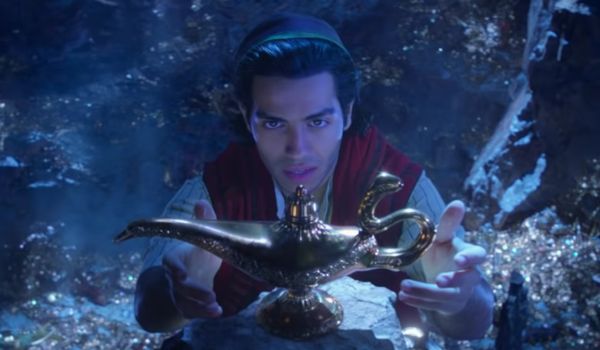
The Quality
Animated Aladdin: It's difficult to say much against the original version of the story. By virtue of being the first, it's the one that is the most creative since it started with nothing. The music is great and Robin Williams just is that great. If there's a downside to the performance, it's that some of the pop culture references probably don't work as well today as they did in 1992. Does anybody remember who Arsenio Hall was?
Broadway Aladdin: The Broadway version is a tough one to judge because the show evolves over time. The show you see in one town isn't necessarily the same you get a year later in another place. Having said that, none of the additional music from Broadway is going to replace anything from the original soundtrack as your favorite song. Some of the show's action, like chase scenes, suffer due to the limited space of the stage, and the finale is incredibly rushed. At the same time, the Genie is having a lot of fun on that stage, and that fun can be incredibly infectious.
Live action Aladdin: Will Smith does a good job making the role of the Genie his own, though the CGI on him isn't perfect. All of the classic music is given a bit of an update, so while they're still songs you know, they're not identical, meaning you may want to actually listen to them now and then. The one new song, "Speechless," is a valiant attempt at a strong anthem for Jasmine, but the song itself feels shoehorned in. Jasmine as a character, however, is at her best in this version.
So Which Is Best?
Each of the three versions have unique things about them which make them each worth seeing, but in the end, both Broadway and the new live-action movie are just trying to reinvent the wheel. Both Broadway and the live-action film basically rely on your love of the original. The nostalgia is a necessary element of both, which the original never needed.
You can judge the live action Aladdin movie for yourself once it hits theaters this Friday, May 24.
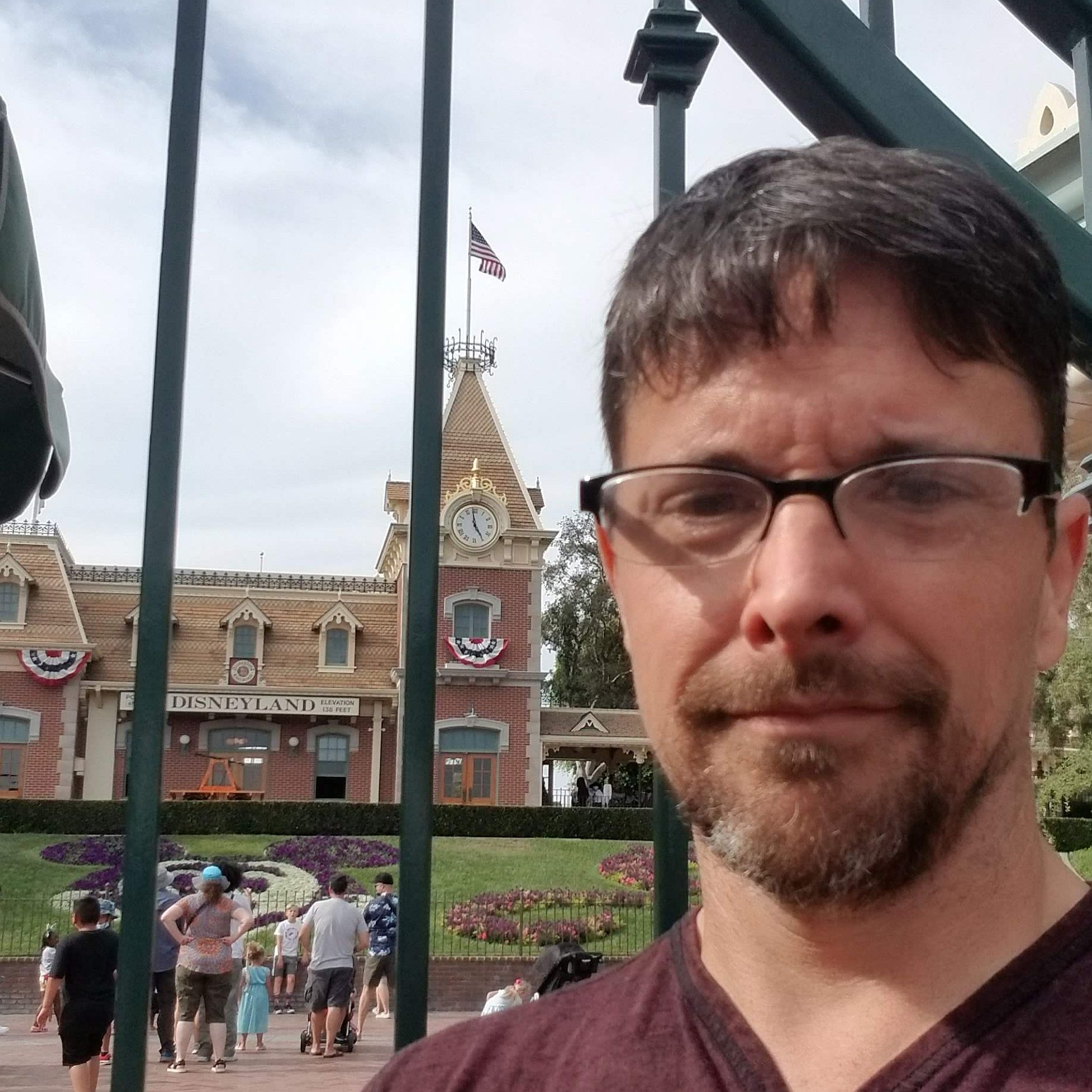
CinemaBlend’s resident theme park junkie and amateur Disney historian, Dirk began writing for CinemaBlend as a freelancer in 2015 before joining the site full-time in 2018. He has previously held positions as a Staff Writer and Games Editor, but has more recently transformed his true passion into his job as the head of the site's Theme Park section. He has previously done freelance work for various gaming and technology sites. Prior to starting his second career as a writer he worked for 12 years in sales for various companies within the consumer electronics industry. He has a degree in political science from the University of California, Davis. Is an armchair Imagineer, Epcot Stan, Future Club 33 Member.
